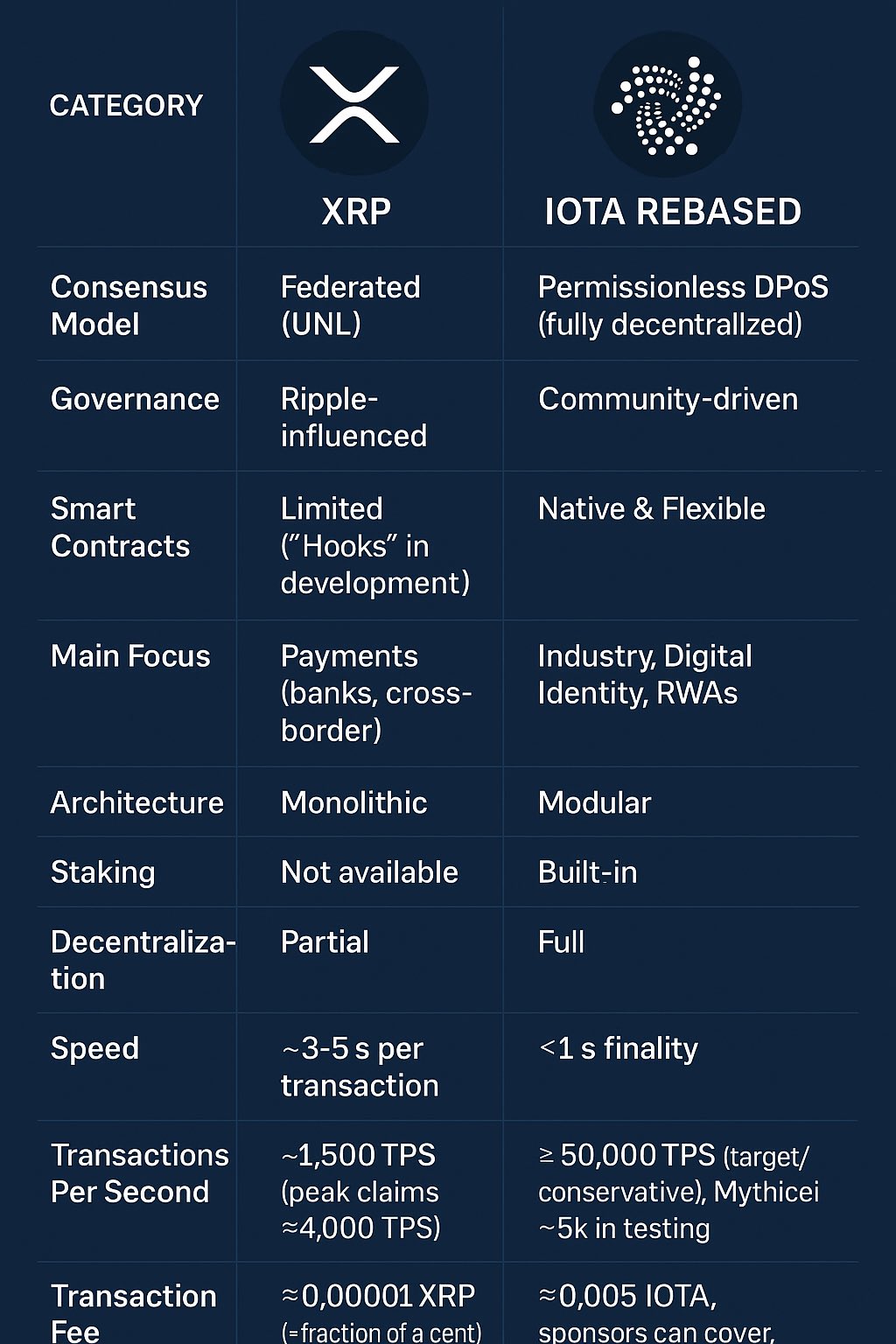- Schiener praised the comparison and hinted at possible collaboration between the IOTA and XRP communities.
- IOTA pushes modular decentralization and real-world utility while XRP sticks to fast financial transfers.
Dominik Schiener, co-founder of IOTA, has responded positively to a public comparison between IOTA Rebased and XRP, suggesting future cooperation could benefit both sides. The comment came after X user Cigamatoi posted a detailed comparison, highlighting the different directions taken by these two decade-old blockchain networks.
Schiener stated, “Really nice comparison of IOTA and XRP!” He emphasized that both are “OG projects” with over ten years in development. He described XRP as a US-based network expanding into Europe, while IOTA, rooted in Europe, is now entering the US market.
“Lots of great lessons from the XRP community and would love to see more collaborations with them,” Schiener added.
Cigamatoi drew a line between the networks’ visions. XRP was built primarily to speed up cross-border payments. In contrast, IOTA aims to handle real-world assets, decentralized applications, and digital identity, creating broader infrastructure beyond finance.
Decentralization, Speed, and Governance Show a Clear Split
Consensus mechanisms show philosophical divergence. XRP uses a federated approach with validators that are often tied to Ripple. IOTA’s permissionless DPoS approach offers a decentralized model with open access. According to Cigamatoi, that means IOTA is founded more on trustless consensus, but XRP is based on pre-defined validators
Transaction speed shows a major technical distinction. XRP requires approximately 3 to 5 seconds per transaction, and under ideal conditions, can handle 1,500 to 4,000 transactions per second. Meanwhile, IOTA Rebased is designed for over 50,000 TPS and has already reached around 5,000 under internal tests. Finality is under one second.
Smart contract capabilities are also on different timelines. XRP is still developing “Hooks,” which have limited use cases. IOTA Rebased already has native-integrated, flexible smart contracts that can exhibit numerous use cases across industries.

IOTA Rebased Pitches Broader Industrial Utility
IOTA is being applied across supply chains, IoT devices, tokenized physical assets, ESG reporting, and digital identity systems. XRP remains tied to its original goal: cross-border bank payments and liquidity handling. IOTA is targeting full industrial environments, not just finance-related transactions.
Transaction costs and token use also differ. XRP’s fee per transfer is extremely low, under 0.00001 XRP. IOTA Rebased averages around 0.0005 IOTA and allows users to avoid direct charges through sponsor arrangements. XRP does not include staking, and its token distribution was more top-heavy early on. IOTA has built-in staking and claims that its user base guides decisions.
The technical structure further separates the two. XRP follows a single-layer design—quick but rigid. IOTA’s framework uses separate modules, which allows adjustments and additions more easily over time.
Cigamatoi concluded that XRP fits the earlier stage of crypto due to its specific target and simplicity. But as interest grows in open governance, adaptability, and clearer mechanisms, platforms like IOTA may be a better fit for what comes next.